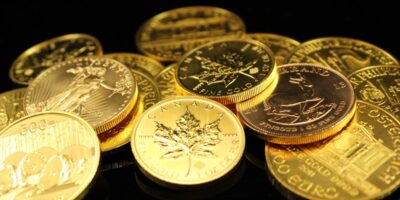1958 Double Die Penny
The 1958 Double Die Penny
The 1958 double die penny is one of the rarest and most sought-after coins in the world of numismatics. It is a fascinating coin with a unique history. This article explores its origins, characteristics, and the reasons why it is so valuable to collectors.
Origins of the 1958 Double Die Penny

In 1958, the United States Mint produced a batch of pennies that ended up having a distinctive error. Coin experts and collectors refer to this error as the double die. A double die error occurs when a coin’s design is struck twice with slight misalignment. This results in a doubling effect that is visibly noticeable.
The double die error in the 1958 penny specifically affects the obverse side, where the date and the word LIBERTY appear. This phenomenon happened during the die-making process. A die is a specialized tool used to imprint the design onto a blank coin. When the die receives a second, misaligned impression, it creates the doubled image.
Characteristics of the Double Die Penny
Collectors identify the 1958 double die penny by its distinct visual traits. The doubling is most apparent in the date “1958” and the word “LIBERTY” on the coin’s face. The doubling might not be immediately obvious to the untrained eye, and it requires close inspection under magnification.
The doubled features show clear separation lines and typically, the doubling appears more robust on earlier strike examples. This error should not be confused with minor mechanical doubling or die deterioration, which are far more common and less valuable.
Rarity and Value
The rarity of the 1958 double die penny significantly contributes to its high value. Few of these error coins were discovered, making them extremely scarce. Only a few authentic specimens have been confirmed and documented. This scarcity is a primary reason collectors are willing to pay high prices for a well-preserved example.
In recent years, sales of authenticated 1958 double die pennies have fetched thousands of dollars at auctions. The value depends on the coin’s condition or grade. Coins in mint state condition, with minimal wear and clear, sharp doubling, command the highest prices.
Grading the Coin
Understanding the condition or grade of a coin is essential for determining its value. Coins receive grades that range from “Poor” to “Mint State” (MS), with the latter indicating a coin is in the best possible condition. For rare coins like the 1958 double die penny, even slight differences in grade can mean substantial differences in value.
Professional coin grading services, such as the Professional Coin Grading Service (PCGS) and the Numismatic Guaranty Corporation (NGC), offer official grading services. Collectors often rely on these services to authenticate and grade their coins. A coin graded MS-65 or higher usually possesses strong eye appeal, and nearly flawless detail, and sometimes commands a premium price.
Authentication of Double Die Pennies
Given the high value and desirability of the 1958 double die penny, authentication is crucial. Many counterfeit coins exist on the market. Expert examination, often provided by third-party grading services, helps ensure the coin is genuine. Collectors should look for coins that have been certified and encapsulated by reputable grading companies.
When dealing with error coins, distinguishing between genuine double die errors and other types of doubling can be complex. Collectors should familiarize themselves with the specifics of the 1958 double die penny characteristics to avoid purchasing inaccurately labeled coins.
Historical Context
The 1950s was a significant period in American numismatics. The U.S. Mint was modernizing its processes and updating equipment. Despite these advancements, errors still occurred, providing unique opportunities for collectors.
Double die errors from this decade are highly collectible. The 1955 double die penny, for instance, shares a similarly legendary status among numismatists. The 1958 double die penny, however, remains elusive with fewer known examples, making it a compelling pursuit for advanced collectors.
How to Find a 1958 Double Die Penny
Finding a genuine 1958 double die penny is incredibly challenging due to its rarity. Most collectors acquire this coin through auctions, private sales, or specialized dealers. Knowing a trusted dealer or participating in numismatic societies can improve one’s chances of encountering this elusive coin.
Occasionally, collection inheritances or estate sales reveal hidden treasures. If a substantial collection is unearthed, examining each coin carefully could potentially uncover a double die penny. However, the probability remains low due to the coin’s scarcity.
Care and Preservation
Proper care and preservation of rare coins like the 1958 double die penny are essential to maintain their value. Avoid handling coins directly; use gloves to prevent oils from your skin from damaging the surface. Store coins in protective holders or albums to shield them from air, moisture, and contaminants.
Consulting with a numismatist about professional conservation services might be beneficial. They can offer guidance on maintaining your collection and possibly restoring coins that have suffered minor damage. Maintaining meticulous records of your collectibles also supports future valuation and sale efforts.
In Summary: The Fascination of the 1958 Double Die Penny
The 1958 double die penny captures the interest of collectors due to its rarity, unique characteristics, and historical significance. The doubling effect, resulting from a minting error, distinguishes it from other coins. Its high value, driven by scarcity, makes it a prized addition to any coin collection. Understanding its features, properly authenticating, and preserving the coin ensures you retain its worth and maybe even see its value increase over time.



